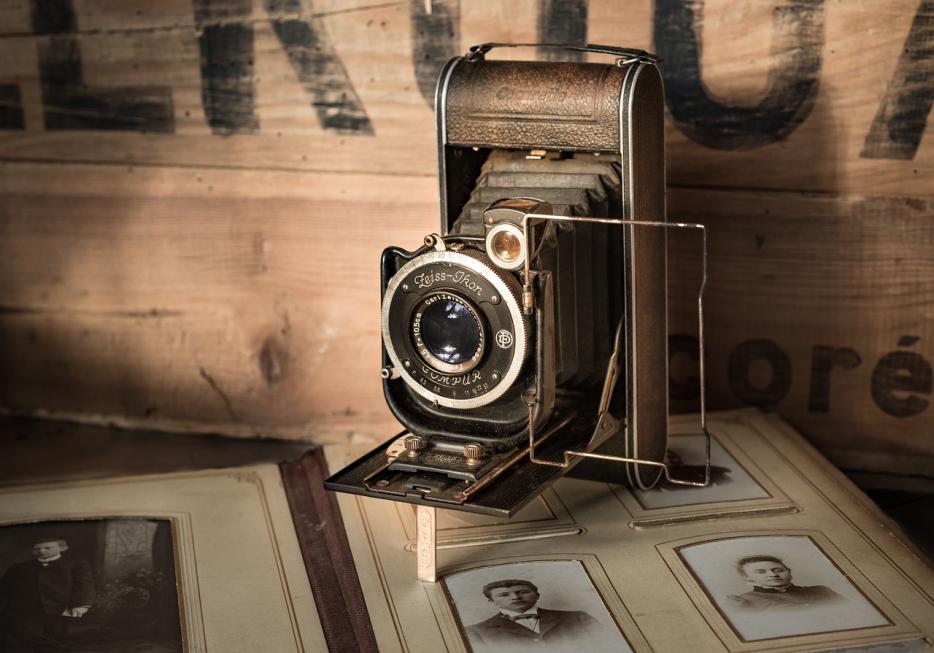The October 29th entry in Roland Barthes’s Mourning Diary—a journal he kept to document the elliptical sentences that came to him after his mom’s death, published after his own—reads: "In taking these notes, I’m trusting myself to the banality that is in me." What Barthes understands is that grief is boring. He also understands that it is worth trusting the banality of grief because something honest lies in its wrinkles and creases—what I think of, to borrow one of his lines, as "the lineaments of truth." Mourning holds very little entertainment value. It repeats the same story over and over (and over and over). Barthes writes, "One day, leaving one of my classes, someone said to me with disdain: 'You talk about Death very flatly.'– As if the horror of Death were not precisely its platitude!" The terror of death is just how boring it is, how positively certain and flat it is sure to be.
At the same time as Barthes was keeping a private diary—with entries like "An onset of grief. I cry."—he was also at work on a polished, publication-oriented work, 1980’s Camera Lucida, where he undertook to theorize photography. He ruminates on what still images are, and what they do, and asks a central question: "does photography exist?" In the midst of this theorization, Barthes mourns his mother, Henriette, by describing the countless photographs of her he sifted through during her illness, and which he clung to after her death. Camera Lucida is an extended eulogy for his mother, insofar as it is an offering—some reflections on photography, yes, but also on time and extended sorrow. (That Barthes himself died shortly after its publication lends it elements of the self-penned eulogy, too, not unlike David Bowie’s Blackstar album.)
The pinnacle of Barthes’s theory of photography (it does exist, after all) is formalized—or really, not formalized at all but felt as a wound—in what Barthes calls the Winter Garden photo, which depicts his mom as a young child. A master of the parenthetical aside, Barthes tells his reader that "(I cannot reproduce the Winter Garden photograph. It exists only for me. For you, it would be nothing but an indifferent picture, one of the thousand manifestations of the 'ordinary' … in it, for you, no wound)." In his elegant way Barthes tells us that we just wouldn’t get it, and he’s right. We might look at the Winter Garden photograph and see a young girl, a mere stranger, where Barthes sees the origin of his world.
Death really is the manifestation of the ordinary to everyone except the griever. Barthes’s experience of looking at the Winter Garden image cannot be reproduced because his loss cannot be reproduced. If by merely looking at Henriette as a child we could feel what Barthes feels, grief would be translatable in a way that anyone who has grieved knows it is certainly not. Barthes describes looking through the many photographs of his mother as a "Sisyphean labour" whereby he finds himself
"straining toward the essence" of her. He draws an analogy between this straining and having dreams of his mother— she is always there, but never quite. He dreams of her, but he does not dream her. The distinction might seem arbitrary, but it is not. He always falls short with this straining until he comes upon the Winter Garden image. The labour of mourning is much like this way of looking. We push the heft of our grief interminably upward and just when we think there might be some respite, or a pause in our loss, it rolls all the way back down and our mourning becomes as fresh as ever.
Grief is boring to those who peer at it from a distance. In grief we turn unapologetically inward, toward what we have lost and with little regard for who and what is still left, we indulge some narcissism and keep everyone else at bay, relegating them to the purlieu just beyond our private hurt. Narcissism has always been a slippery fish—flopping between a "personality disorder" and a mere character trait, depending on who is doing the diagnosing. For our purposes, let’s trace its two predominant meanings: narcissism is considered to be either excessive self-love and self-centredness or, it is, qua the Oxford English Dictionary, a "condition of gaining emotional or erotic gratification from self-contemplation." We might think of the first meaning in its emphasis on excess as akin to the prospecting for social cachet we find online when users grieve-post in thoughtless abundance, hoping to hit upon a viral nugget. The latter definition links narcissism to "self-contemplation," which is nearer to the work of private mourning.
This version of narcissism is also closer to Freud’s original distinction, in "Mourning and Melancholia," between the healthy mourner who gets over his loss before too long and the mopey, narcissistic melancholic who doesn’t. Narcissism, then, is derided as faulty because its inward gaze brings pleasure—even when that pleasure can be painful, as it is with grief. For Freud, and generations of practitioners after him, narcissism is a "normal" part of development in childhood, but morphs into a psychological disturbance when it persists in adulthood. Yet there is a narcissistic pleasure to be taken in our grief, a self-centredness that can come as a relief. It can feel good to plug up your ears to the din of the outside world that continues to spin despite your loss. But this psychic sabbatical of self-indulgence too quickly gets chalked up to an "unhealthy" egotism and the sojourn is cut short.
In A Lover’s Discourse, Barthes describes what it is like to try to be normal when you’re stumbling in the ruins of your loss. "Sometimes I have no difficulty enduring absence," he writes. "Then I am 'normal': I fall in with the way 'everyone' endures the departure of a 'beloved person.'" Being "normal" can feel like an endurance test, and it can often feel like the only socially viable option.
I don’t know where or when I learned that I needed to curb any narcissistic tendency I might feel, even in grieving, but I most certainly caught on quick. I recently found a diary I had sporadically written in the year following my mom’s death. It makes my nerves itch to read it, not because of what it says, but because of what it so actively and assertively avoids saying. Even in the privacy of my own pages, I didn’t let myself wallow in my loss. I wrote about everything except it. I wrote about the boy I was fixated on, about reading Melville, and—this is as close as I got to the truth—about how I was feeling a general sense of malaise.
It’s no sin to be obsessed with dating and crushes at nineteen. I should give sad nineteen-year-old me a break. But then there is also a repeated refrain throughout the journal that seems impossible to believe at face value, and if I hadn’t been the author of it myself I would be tempted to call it fake. In these pages, my younger self keeps wondering why I can’t just be "happy." I keep wondering if art will be my path toward this elusive happiness, or if continuing to study literature will deliver the clap of inspiration I felt my life was missing. I wrote entry after entry confused about my sadness, as though the reason weren’t right in front of me: I’d lost my mom and was trying to live on as if it was not so big a deal. I was pledging a clueless allegiance to a happiness script even in the gloaming of my grief.
There’s only one entry where I allow myself some pity. On November 6, 2005, exactly one year after the death of my mom, I wrote:
One year today. I sat in that room alone with mom until her sun-freckled chest stopped raising with the intake of air. We sat in the green hall on the cold floor in shock and relief and disbelief.
One year today and I feel hard. I’m cold and not able to grieve the way I want to. I want my grief to manifest itself outwardly so that I would have no choice but to tell the world. I’m sad, I’m lonely. I miss her.
I finally permitted myself some glum inwardness, some much-deserved narcissism that now I wish I’d allowed myself so, so much more of. I was wishing for a materialization of my grief—a permanent broken-heart-shaped bruise, an immovable mourning band laid taut against my puny arm, my brown hair turned white overnight—to signal my sadness to others. At the time I just couldn’t find the words to articulate the grief that was engulfing me, and besides, I would have been too scared to utter them even if I’d found them.
To be overcome with grief is to have given a damn about someone else. To be narcissistic in your grief is to take the time you need to flounder in the new absence. In the wide expanse of newly discovered loss, we become situational narcissists, paddling in circles around ourselves, looking helplessly for what has already sunk. Narcissism is considered superficial and inauthentic, but that’s only because we keep insisting it is. The insistence that narcissism and self-reflection are always already in excess of what is "normal" is faulty—there is not enough introspection in modern life, especially when it comes to reflecting on death. In my own avoidance of processing the loss of my mom, I was, in a less obvious way, obsessed with it all the same. The energy I spent occluding my sadness was just as much work, I think, as it would have been to reckon with it. All I really wish is that I had been less concerned with my grief (and its attendant narcissism) impinging on the comfort of others.
*
Sifting through photographs, and theories of the photograph, Barthes wonders where death has gone and if it bears "some historical relation with what Edgar Morin calls the 'crisis ofdeath' beginning in the second half of the nineteenth century… For Death must be somewhere in society," Barthes muses, "if it is no longer (or less intensely) in religion, it must be elsewhere." He suggests that with the "withdrawal of rites" and the wearing out of religious illusion, there is now an "asymbolic Death, outside of religion, outside of ritual," that has taken its place. Which is to say, death is no longer a site of meaning—of faith, of comfort, of value—but an abruptly literal thing. Since we no longer sit with death for very long anymore and since it does not get the same prolonged attention it once did, death becomes purely (and terrifyingly) literal, and a binary is entrenched between life and death, as though they weren’t intrinsic to each other. For Barthes, death returns in the photograph: "Life/Death: the paradigm is reduced to a simple click, the one separating the initial pose from the final print."
This return of death in the final print of the photograph sounds a lot like Freud’s theory of the return of the repressed, which was later taken up and further theorized by Barthes’s contemporary Jacques Lacan. Freud and Lacan write about how what we unconsciously repress (refuse to acknowledge, resolutely deny) comes back in other ways, against our will. In other words, we can’t hide from what we don’t want to see or feel. According to Freud, no taboo desire or traumatizing experience or nebulous fear is forgotten. Quite the opposite: these wishes and feelings and fears are almost immortalized in our unconscious minds and they are just biding their time until they surface again. We have come to repress death so assiduously and so often that it is bound to rear its head in ways we can’t anticipate. So we can buy all the self-help books we want, we can continue to drape our illnesses in aggressive and death-denying language, and we can give clichéd eulogies instead of grappling with last words ourselves, but death isn’t going anywhere. The repressed returns. Conventionally, the return of the repressed manifests in slips of the tongue, mistakes in memory, fantasies, and the like, but what Barthes’s Camera Lucida suggests is that this return can take shape in our cultural productions, too–like the photograph.
*
In the spirit of Barthes and of his mother, Henriette, I went looking through some photographs of my mom. I haven’t looked much at photos of her since she died, and when I started my small archival dig I realized that most of them I had never seen at all. There is one photo in particular that, while I can’t claim it as my Winter Garden equivalent, I found arresting. Susan Sontag writes in On Photography, "Photographs, which cannot themselves explain anything, are inexhaustible invitations to deduction, speculation, and fantasy." In my instance, this photograph came as a welcomed, even overdue, invitation to fantasy. The picture is slightly larger than your standard four by six inches, and it has become browned and crinkled with age. Tape that has long since lost its stickiness hangs off the corners, with bits of paper still clinging to it from a scrapbook where the photograph once was kept. In the picture, my mom’s body forms an arc as her right arm cuts vertically through the air with a tennis racket in hand while the left reaches out horizontally to help her balance. Only one of her feet has left the ground, but even then, just a little bit. She wears a full tennis getup: tube socks and white sneakers, a pleated skirt and V neck cable-knit sweater with a button collar poking out from underneath (also all white).
I’m describing to you some of the details, and there are more I could give. I could give you some context, like the fact that my mom was the city tennis champ of Hamilton, Ontario, back in her day, or that she played varsity for her university. But, if I’m really to be in the spirit of Barthes’s way of looking, his way of "straining toward the essence," then I’ll admit that the astonishment of this image does not lie in the facts. What captures me is the blur of the racket as it swoops through thin air. The fuzziness of this part of the image shows a motion that was over the very next instant, and that reminds me just how long-over that instant is now.
I want to be able to strain toward an essence like Barthes does, but instead I look for my own likeness. I notice that her eyebrows thin out at the ends just like mine, which make them fade into nothingness when photographed. I see that her legs aren’t quite my legs, but then I look at her hair, her eyes, her chin, and think about how I’ve been told my whole life that I am her spitting image. I can see it here. The part of the photograph that holds my attention the most and that my eyes keep returning to—what Barthes would call the punctum (the point in the image that pricks me)—is my mom’s left hand. It is the only uncontrolled movement she makes: the fingers hold no pose, but are gently splayed in a blurry motion like the swoosh of the tennis racket. I never saw this picture when she was alive, and so the image holds meaning for me only in the fact of her death. I look at this glamour shot of my mom playing tennis sometime in the mid-1960s in Dundas, Ontario, and what I see is my own wish for her to fleetingly return to me. Swoosh.
But perhaps my Winter Garden photograph is not a photograph at all but a grocery list. For nearly twelve years I’ve kept a grocery list, twenty items long, that my mom had written out. She probably wrote it a few months before her death, and I found it in the pocket of a pink sweater I had bought her the previous Christmas. I’ve kept the list because I don’t want to forget what her handwriting looked like. The small white square of paper now folds easily into its worn creases, made supple from years of repeated foldings and unfoldings. I like to look at the list because in her cursive hand my mom comes back to me. It’s not just her handwriting I’m reminded of, but her trill little voice, singsong when she teased you, commanding when it needed to be.
The items on her grocery list (soy milk, tile cleaner, tuna) help me remember the routine things she liked—small preferences, the constellation of tiny decisions that made up her life. There is nothing remarkable about it, as far as grocery lists go. Why this scrap of paper holds what feels like a universe for me is because with her death I lost all the trivial things that made my mother a multi-dimensional person, that made her alive instead of dead.
Excerpted from The Last Word: Reviving The Dying Art of the Eulogy by Julia Cooper






